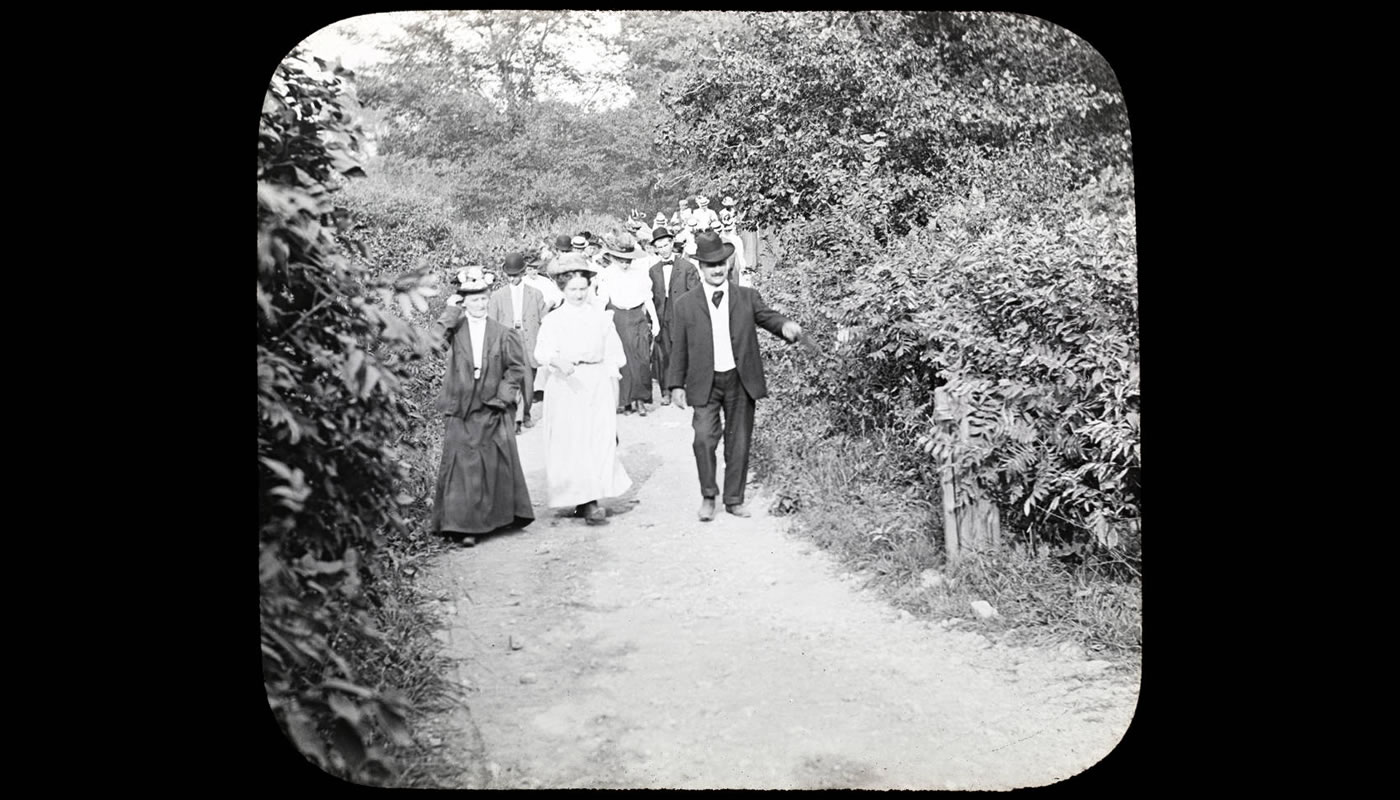More than 100 years ago, as our young metropolis was quickly expanding, civic leaders in Chicago had the wisdom and foresight to create the first forest preserve in the nation. Their mission remains ours today:
“To acquire, restore and manage lands for the purpose of protecting and preserving public open space with its natural wonders, significant prairies, forests, wetlands, rivers, streams, and other landscapes with all of its associated wildlife, in a natural state for the education, pleasure and recreation of the public now and in the future.”
The Forest Preserves of Cook County, with nearly 70,000 acres, is one of the oldest and largest forest preserve districts in the United States. It receives an estimated 62 million visits each year, providing an escape into a world teeming with wildlife and rich with outdoor recreation and environmental education opportunities. Within its boundaries are rare habitats that offer plant and animal diversity on par with the rainforests of the world.
At the start of the 20th century, it was clear that Chicago was fast becoming one of the world’s great cities. It was also clear that the beautiful landscapes surrounding the city could soon vanish under the aggressive spread of houses and factories.
Led by the same ideals that were launching the National Park System around the same time, community leaders came together to propose an audacious idea: Create a huge expanse of public land around the city’s core and protect it forever in its natural state.
The visionaries behind the efforts to create a forest preserve district included Jens Jensen, a landscape architect famous for celebrating Illinois’ native plants, and Dwight Perkins, an architect who helped found the Prairie School Movement. Starting in 1904, they advocated tirelessly for the creation of a permanent preserve system, and turned local leaders into supporters, including noted city planner Daniel Burnham and The Commercial Club of Chicago.
On November 3, 1914, the residents of Cook County voted in favor of establishing a forest preserve district whose boundaries would be analogous to the boundaries of Cook County. The Forest Preserve District of Cook County was established on November 30, 1914 and the first meeting of the Board of Forest Preserve Commissioners was February 11, 1915.
On June 25, 1916 the first lands were obtained—500 acres of what is now known as Deer Grove—and by the end of the 1930s, the Forest Preserves held a total area of 33,000 acres. During this time, the Forest Preserves also worked to expand services for patrons. By 1920, the district created a special “Golf Committee” charged with setting aside land for golf courses and hiring concessionaires to serve golfers, and by the early 1930s, the district had begun construction on roads, walking trails and recreational facilities.
During the Depression, the influx of funds and labor through the New Deal’s Civilian Conservation Corps, Public Works Administration, and the Works Progress Administration increased the pace of these improvements. In the WPA Guide to Illinois, The Federal Writers’ Project Guide to 1930s Illinois, the authors wrote, “Within [the Cook County Forest Preserves] lie more than 150 miles of hiking trails, 40 miles of bridle paths, and special facilities ranging from ski and toboggan slides to swimming pools. Only a few minutes out of the city, they are extensively used by picnickers, hiking and nature study clubs, and those merely seeking a brief respite from the roar and clamor of the metropolis.”
In 1934, the Chicago Zoological Society opened the Brookfield Zoo on land donated to and purchased by the Forest Preserves, and in 1972 the Chicago Horticultural Society opened the Chicago Botanic Garden on Forest Preserves land in Glencoe. Both the Zoo and Garden remain close partners with the Forest Preserves, which helps support the institutions and shares their mission of preserving and providing education about the natural world.
The Zoo grounds are located on 216 acres and include outdoor and indoor habitats for a vast array of animals, some of which are critically endangered. With its world-renowned plant collections and displays, the Garden is one of the most visited public gardens in the world. Both are preeminent centers for learning and scientific research.
Over the decades, as the scientific community’s understanding of native ecosystems evolved, the Forest Preserves has also expanded its commitment to protecting and restoring the habitats in our care. After World War II, the Forest Preserves created the Department of Conservation (now the Department of Resource Management), influenced by Aldo Leopold’s land ethic, which outlines the human responsibility to the natural world. The first prairie restoration was implemented at Camp Sagawau in 1965, and in 1996 the Forest Preserves helped found Chicago Wilderness, a coalition dedicated to protecting nature in the region.
In 2014, the Forest Preserves released the Next Century Conservation Plan (NCCP), an ambitious blueprint for making Cook County a national leader in urban conservation. The NCCP calls for massive restoration and expansion of protected lands, as well as a commitment to making the preserves more accessible to the diverse people of Cook County. The following year, the Forest Preserves released the Natural and Cultural Resources Master Plan, which provides the guidance needed to implement the NCCP’s natural resource goals. It also lays out a natural and cultural resources framework for future land acquisition, recreation development and capital improvement.
Much has changed in the more than 100 years that the Forest Preserves has been serving the residents of Cook County, but we continue our commitment to the county’s natural wonders and the “education, pleasure and recreation of the public now and in the future.”
To learn more about how we accomplish our mission today, visit our Who We Are Page.
Additional History Resources
- Chicago’s True Nature: The Forest Preserves of Cook County — This 2016 documentary captures the sights and sounds within the Forest Preserves as it marked its 100th anniversary throughout 2015.
- Forest Preserve District of Cook County Archive — The University of Illinois at Chicago Library collection includes correspondence, memoranda, reports, financial records, construction plans and blueprints, and photographic prints, negatives, and glass “lantern slides.”
- Centennial History Series — The Centennial History Series takes an in-depth look at various chapters throughout the Forest Preserves’ 100 years.
- Early Prairie Restoration in the Forest Preserves of Cook County
- Truck Gardens and Tent Colonies — Early Uses of the Forest Preserves
- First Catch — Initial Fish & Water Management in the Forest Preserves
- Aldo Leopold and the Forest Preserves
- An Interview With Dwight Perkins’ Grandsons
- Who Put the “Forest” in the Forest Preserves?
- To Protect & Preserve: An Early History of the Forest Preserve District of Cook County, Illinois — This interactive exhibit from the University of Illinois at Chicago Library covers the early history of the Forest Preserves.

